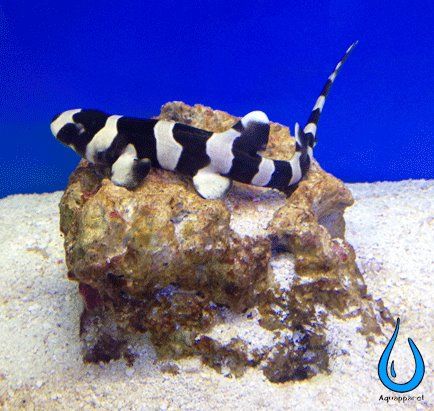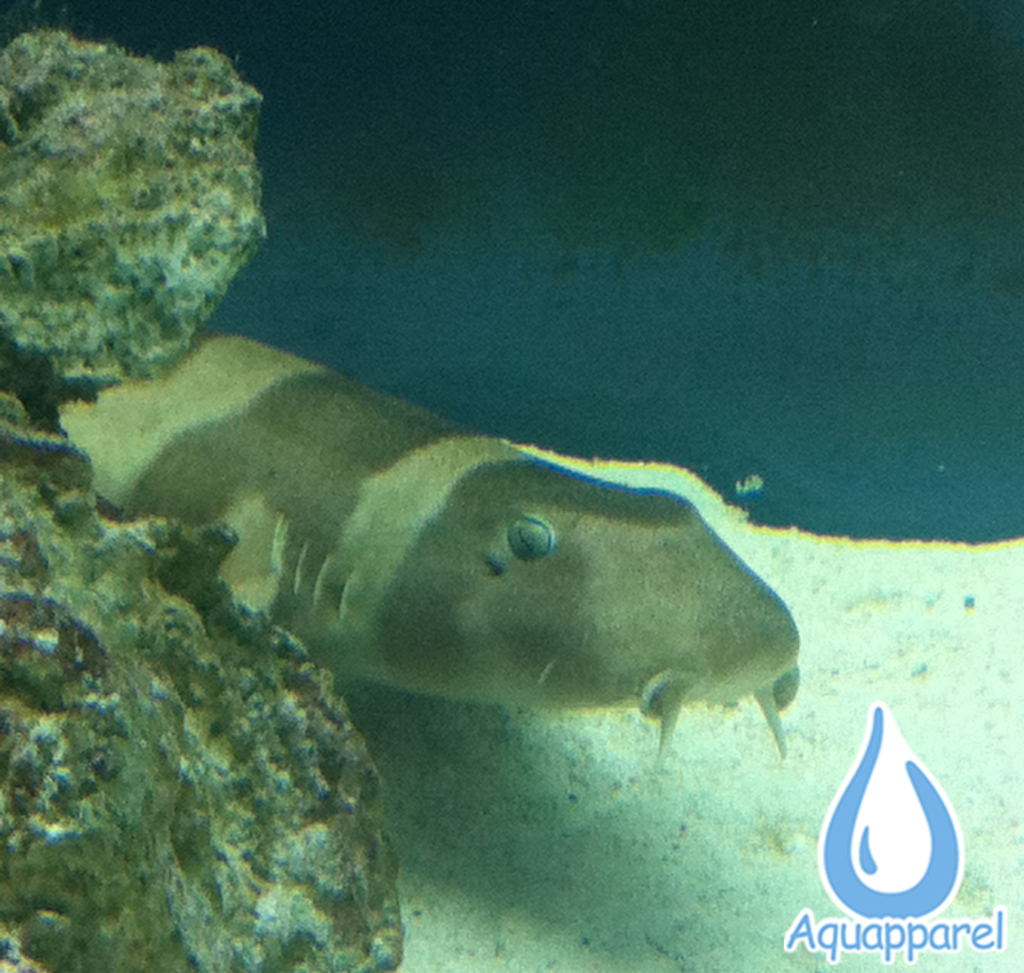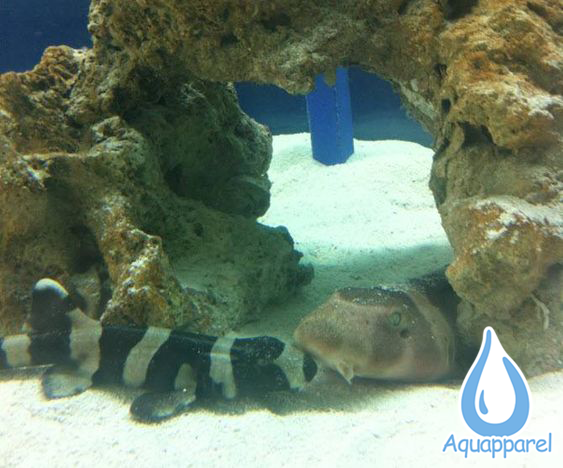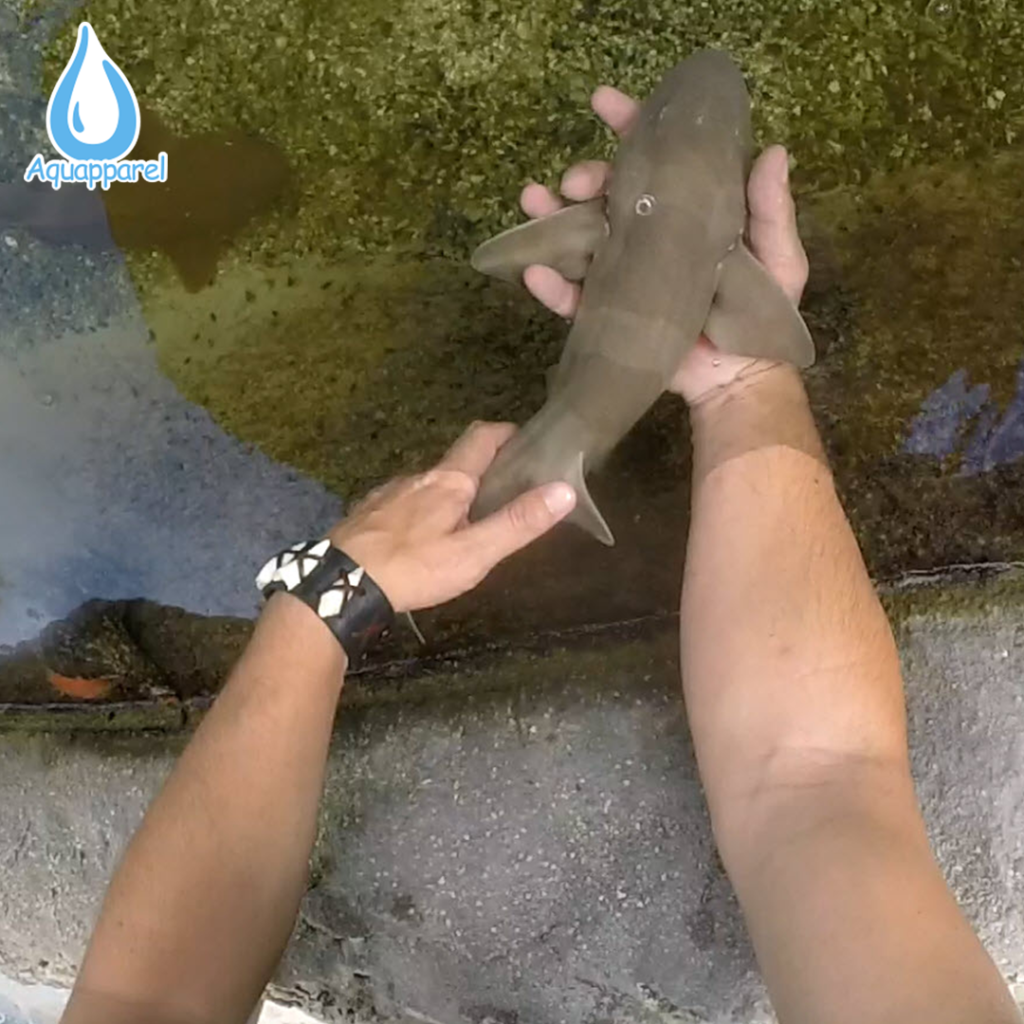- The Brown Banded Bamboo Shark is a small benthic species of shark found in the Indo-West Pacific from Japan to northern Australia.
- When the shark is a pup they have black and white colors bands on their body that look like this:

As a juvenile their bands start to fade to a light brown color like this:

Some even have freckles when they are young. You can see a few on the juvenile shark’s face on the right pictured below.

And then as a full grown adult their bands fade even further and blend more like this:

3. They get up to 3.5 feet in length for the males and the females can get up to 4 feet in length.
4. Despite their maximum size, they are the most readily available shark in the aquarium hobby. Their size is one reason – among several others – that they actually do not make good pets. Watch the video below to learn more if you are thinking about purchasing one of these for your home aquarium to see if they are a good fit for you or not.
5. They are oviparous which means that they lay eggs. The eggs develop within the mother. She then deposits them and the shark feeds off of the yolk sack inside of the egg. During that time the rigidity of the egg starts to diminish which makes it easier for the shark to swim out of the egg once it consumes the yolk sack completely and starts to feed on live foods.
6. It takes approximately 77 to 123 days for the shark pup to fully develop and hatch out of its egg.
7. You should never remove a shark from an egg case while the yolk sack is still present. This can be detrimental to the shark’s development and even can result in the shark’s premature death.
8. Where the yolk sack attaches to the shark’s stomach is just like a human’s belly button. Unlike ours, it heals completely once the yolk sack is consumed and closes up. During this time period the shark – if removed from it’s egg prematurely – can suffer a major bacterial infection which can lead to it’s pre-mature death.
9. In the wild they spend all of their life in a small area on a coral reef and they are also found in tidepools.
10. Their role in the environment is to keep populations of small fish and invertebrates in check.
11. They have very slow metabolic rates and as a result are not a very active species.
Between myself and my good friend Matt Heyde, we have rescued, rehabilitated and re-homed over 100 sharks since 2012. You can learn more about that program here: Shark Rescue, Rehabilitation and Re-Home Project Here’s a preview:
If you found this article while researching whether or not this species is a good pet for you, please do your research and understand that this species will not stop growing just because you house them in a small aquarium. This is 100% not true. If you want to learn more about this species as well as how to care for aquarium sharks in general, I offer an online course which you can enroll in here: Aquarium Sharks for Beginners
